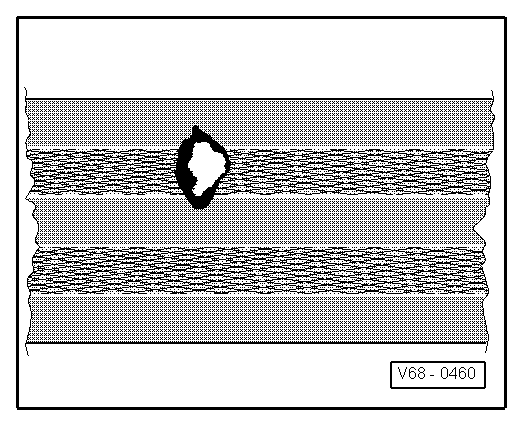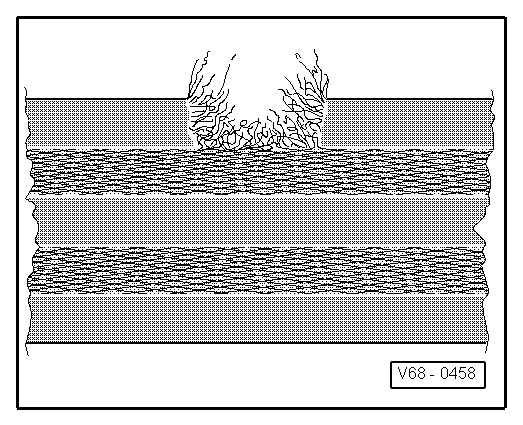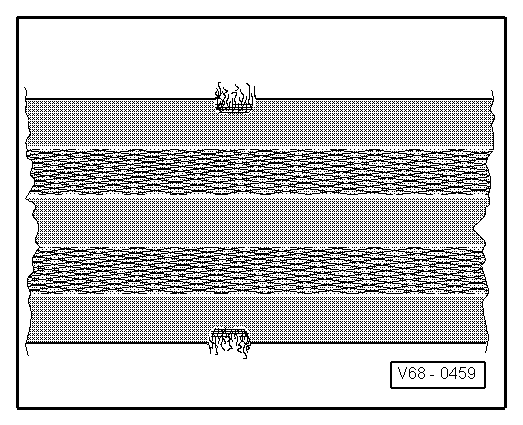| 3- Cigarette burn marks or similar |
| Check inertia reel device (locking effect) |
| The automatic belt device has two locking functions |
| The first locking function takes place when the belt is pulled sharply from the inertia reel device (acceleration of belt extraction) |
| –
| Pull belt webbing hard out of the inertia reel device. |
| If it does not block, replace the complete safety belt with the buckle |
| If the belt has problems on extraction or retraction, then check whether the position of the inertia reel has been altered. |
| The second blocking function takes place when the development of the vehicle movement is modified (blocking function dependent on vehicle) |
| –
| Accelerate vehicle to 20 km/h and then brake sharply with foot brake. |
| If the belt does not block during braking, the complete belt including the buckle must be replaced |

WARNING | For safety reasons, the test should be carried out in a traffic-free area to avoid endangering other users of the road. |
|
| Visual check of belt buckle |
| –
| Check the belt buckle for cracks and wear |
| In the event of damage, replace the complete safety belt with the buckle |
| Visual check of belt buckle operation |
| –
| Checking seat belt buckle: |
| –
| Insert the tongue connector in the buckle until it is heard to click into place. Pull hard on the belt to check that the locking mechanism is engaged. |
| If in a minimum of 5 tests, the tongue connector comes out once or more, the complete safety belt and buckle should be replaced |
| –
| Release the safety belt by pressing the buckle button with the finger. |
| When the webbing is slack, the tongue connector should come out of the buckle. |
| –
| Repeat the test at least 5 times. If in a minimum of 5 tests, the tongue connector does not come out once or more, the complete safety belt and buckle should be replaced |

WARNING | Never use lubricants to remove noise or stiffness in the buckle buttons of the belts. |
|
| Check support fittings and tongue connector |
| The support fittings covered in plastic have slight parallel grooves after the belts have been subjected to load (accident with the belt fastened), while only flat wear without lines can be seen as a result of wear from frequent use |
| –
| Check for dents, cracks or damage to the plastic. |
| In the event of grooves and/or damage, replace the complete safety belt with the buckle |
| Check components and anchorage points |
| t
| Misshapen tongue connector (stretched) |
| t
| Height control does not work |
| t
| Anchorage points (seats, struts, vehicle floor) damaged or damaged threads |
| If the parts are observed to be damaged, replace the complete safety belt with the buckle |
| –
| Replace the anchorage points. |

Note | In the case of damage not produced by an accident, e.g. wear, only the corresponding piece need be replaced. |
|
|

|
 Note
Note

 Note
Note
 Note
Note

 Note
Note